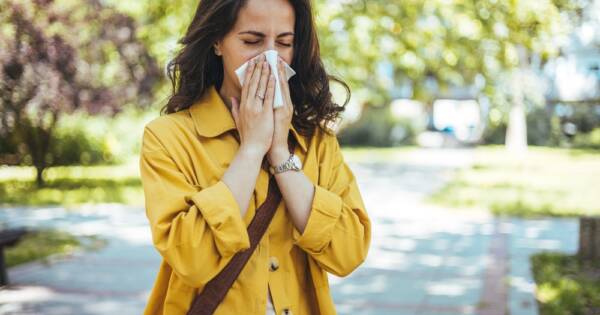Of all the health conditions and ailments you need to be worried about, your heart’s health is one of the most important. An unhealthy heart can be the first hint of heart disease – a disease that’s the leading cause of death in America, according to the CDC¹. And one of the most common forms of heart disease is coronary artery disease.
Coronary artery disease (CAD) is one of the deadliest types of heart disease you can develop. CAD is responsible for taking more than 370,000 lives each year, and it’s difficult to stop². Often, people don’t realize they have CAD until they have a heart attack.
 sciencepics / Shutterstock
sciencepics / ShutterstockUnfortunately, failing to realize you have CAD until a heart attack happens could be deadly. There are other ways to determine whether or not you’re living with CAD, or potentially at risk for CAD, before a heart attack happens.
What Causes Coronary Artery Disease?
Coronary artery disease begins in the arteries. Plaque builds up in the walls of the arteries, which in turn affects the heart’s blood supply.
That plaque forms because of cholesterol or other substances. Over time, the buildup can become so significant that the arteries become more narrow. And that can either partially or completely block blood flow, the CDC reports³. This means the most important arteries in your body cannot deliver blood, oxygen, or important nutrients to your organs.
There are a few factors that put you at risk for CAD. The CDC notes that the following can all increase your odds of developing CAD⁴:
- Being overweight or obese.
- Inactivity, or a lack of physical activity and exercise.
- Unhealthy eating habits.
- Smoking.
- A family history of heart disease.
Fortunately, if you’re aware of the signs and symptoms of CAD, you may be able to prevent a blockage from happening. And that could prevent a heart attack or other serious heart issues.
Signs and Symptoms
A heart attack doesn’t have to be the only sign of CAD that you experience. There are ways to determine whether or not you might have CAD – before your life is at risk.
Initially, the presence of coronary artery disease may not give off any noticeable symptoms. You could live a perfectly normal life without knowing that plaque is building up inside your arteries. However, as the plaque becomes an increasingly bigger problem, CAD can begin to show signs and symptoms.
The Mayo Clinic⁵ recommends that you look out for the following common symptoms, which could be a sign of CAD.
Chest Pain
Chest pain, pressure, or tightness can accompany CAD. Also called angina, this pain can make it feel like something heavy is on top of your chest. It can happen in any area of the chest, and it’s often triggered by stress. Pain can be fleeting, or appear and disappear when you’re under physical or emotional stress.
Angina can also bring on other symptoms, such as indigestion, heartburn, sweating, cramping, or nausea.
Shortness of Breath
When your heart is struggling to pump blood, you may wind up experiencing shortness of breath. This is a sign that your heart is struggling, potentially along with other organs or areas of the body. You might struggle to breathe when performing physical activities, or you could feel tired or out of breath when you exert yourself.
Heart Attack
Heart attacks are a common symptom of CAD – and they occur when an artery is completely blocked. You’ll likely experience symptoms like chest pressure, pain in one side of the shoulders or arms, shortness of breath, and sweating. Heart attacks can occur without any signs or symptoms, so it’s important to pay close attention to how you’re feeling.
What to Do If You Notice Any Symptoms
If you notice any of the signs or symptoms associated with coronary artery disease, it’s important to see your doctor as soon as possible. Your doctor will be able to test for CAD and diagnose the source of your problems.
If CAD is left untreated, it can cause all kinds of complications. The Mayo Clinic⁶ reports that CAD can lead to conditions like:
- Angina
- Heart attacks
- Heart failure
- An abnormal heart rhythm
But if you’re able to discover CAD before it leads to serious complications, you may be able to manage the condition. And this could save your life.
There is no cure for CAD, Medical News Today⁷ notes. However, it is a condition that’s able to be managed. Doctors typically prescribe medications to help reduce the risk or impact of CAD. Surgery is also an option if arteries are too narrow or blocked.
But above all else, doctors typically recommend lifestyle changes. Changing your habits can help prevent CAD from developing or better manage the condition for healthy arteries. This commonly involves reducing or eliminating risk factors by losing weight, eating healthy, and getting physically active.
If you’re worried about coronary artery disease, it’s important to be able to recognize this condition. You can talk with your doctor about your risk level and any potential risk factors. And if needed, you can make changes to your lifestyle now to prevent or slow the progression of CAD.


